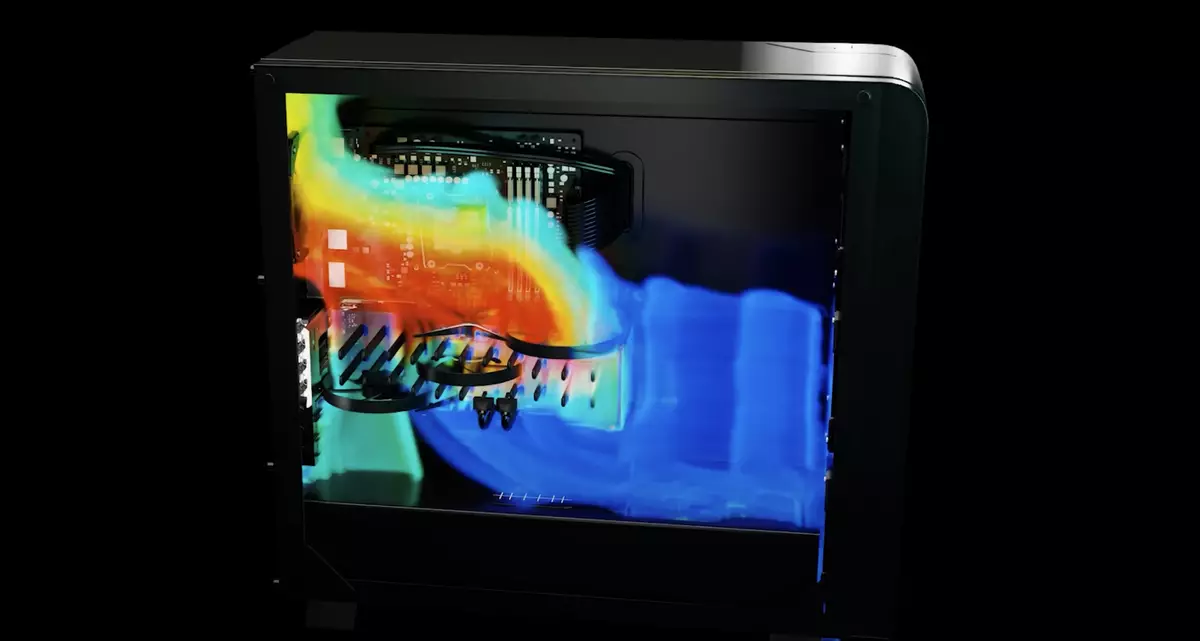Nvidia has long been recognized as a leader in the graphics technology industry. With the unveiling of its newest GeForce RTX 5090 graphics card, the company is setting the bar even higher with innovative design and performance optimizations. The journey of creating the RTX 5090, however, was not a straightforward path. Through a fascinating exploration of its design and engineering, Nvidia has shared insights that highlight both the challenges and breakthroughs that have shaped this impressive piece of technology.
The R&D process for the RTX 5090 began with an ambitious goal: to achieve groundbreaking levels of performance within a smaller footprint than ever before. Initially, Nvidia considered a four-slot prototype that quickly became impractical due to size constraints and compatibility issues with existing PC cases. This scenario illustrates the complexities that modern hardware developers face, as the trend toward miniaturization must meet the relentless demand for increased power.
To successfully shrink the GPU’s circuit board by 40% to 50% relative to its predecessor, engineers drew from past experiences with previous models. A notable leap occurred with the launch of the RTX 3090, which pushed power consumption levels from stagnating around 250-260 watts to an eye-watering 350 watts. Such feats are commendable, yet they came with the realization that an ever-bulky GPU could alienate consumers looking for compact yet powerful solutions. This balancing act of engineering underscores the company’s dedication to meeting diverse user needs.
Cooling remains one of the most critical aspects of modern GPU design, especially as raw power continues to increase. Nvidia’s foray into innovative cooling mechanisms reveals its commitment to long-term performance sustainability. The RTX 5090 development benefitted from the concept of “blow through” cooling, which facilitates airflow directly through the GPU, ensuring optimal thermal management.
Through a clever redesign, Nvidia conceptualized what it dubbed “two-thirds blow through,” allowing for three fans to effectively dissipate heat despite a reduction in size. By segmenting the PCB into three distinct parts, including a main board for the GPU and memory, as well as unique daughter boards for I/O connections, engineers managed to bring down the overall volume without sacrificing efficiency.
Nvidia also experimented with cutting-edge thermal interface materials (TIMs), choosing liquid metal for its superior thermal conductivity. However, this presented its own set of engineering challenges. The critical task of creating a reliable, hermetically sealed TIM took considerable iterative work to ensure it could withstand various environmental conditions.
One of the standout innovations of the RTX 5090 is the introduction of what Nvidia claims is the “first-ever 3D vapour chamber.” By integrating heat pipes directly into the chamber, Nvidia has engineered a cooling solution that is denser, more efficient, and compact. Such advancements in cooling technology not only help to manage the thermal output of high-powered components but also open the door for the integration of even more powerful GPUs into smaller cases.
This raises a pertinent question: how can third-party manufacturers compete with design intricacies developed exclusively for Nvidia’s Founders Edition products? The answer lies in recognizing the investment Nvidia is willing to make in research and development. Third-party manufacturers face steep competition, not just in technological prowess but also in resources and innovative potential.
Nvidia’s RTX 5090 development illustrates a significant leap in both engineering and design philosophy. The combination of innovative cooling solutions, intricate PCB support structures, and the pursuit of higher performance in smaller designs is a testament to the company’s commitment to pushing the boundaries of what’s feasible in GPU technology. As Nvidia’s Hunter Denter aptly stated, the attention to detail in each design aspect deserves recognition. This level of diligence ensures that Nvidia not only remains a frontrunner in the graphics card market but continues to redefine what is possible in the realm of computing performance. As we look to the future, it will be fascinating to see how Nvidia’s efforts influence the evolving landscape of high-performance graphics solutions.

